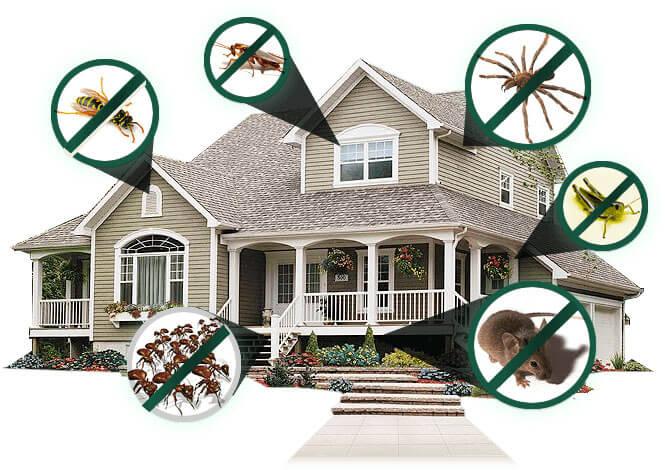Bed Bug Treatment Breakdown: Contrasting Chemical Vs. Non-Chemical Solutions
In the realm of pest control, particularly when handling the consistent concern of bed pests, the selection between chemical and non-chemical therapy options can be an essential one. Both strategies provide distinct benefits and drawbacks, influencing aspects such as effectiveness, security considerations, and total expense. By examining the nuanced details of each approach, a clearer understanding of which course to go after in resolving a bed bug invasion can be obtained.
Effectiveness of Chemical Treatments
Chemical treatments for bed bug invasions have been commonly recognized for their potent and fast efficacy in eradicating these parasites. When taking into consideration the efficiency of chemical treatments, it is important to comprehend that they can supply a fast and extensive solution to a bed pest trouble.
Additionally, chemical therapies have the advantage of providing recurring results, indicating that they can proceed to eliminate bed pests even after the initial application. This residual activity is especially advantageous in combating any kind of potential re-infestations. In addition, the quick activity of chemical therapies can bring relief to individuals encountering severe bed bug invasions, permitting them to restore control of their living rooms swiftly.
Safety And Security Interest In Chemical Solutions
One important element that requires cautious factor to consider when making use of chemical services for bed bug treatment is guaranteeing the safety and security of occupants and the environment. Exposure to certain chemicals used in bed insect therapies can lead to respiratory system problems, skin irritation, or other adverse reactions, specifically in people with pre-existing conditions or level of sensitivities.
Moreover, the environmental influence of chemical remedies is another considerable factor to consider. Some pesticides made use of in bed bug treatments may be hazardous to beneficial bugs, wild animals, and communities if they seep right into the soil or water supply. It is necessary to use chemical treatments carefully, complying with safety standards, and taking into consideration less harmful options to reduce these dangers and make certain the reliable and secure management of bed bug invasions.
Advantages of Non-Chemical Strategies
Considering the potential safety issues and ecological influence connected with chemical remedies for bed bug treatment, exploring non-chemical strategies presents an appealing choice with several distinct advantages. Non-chemical approaches provide a more secure alternative for houses, particularly those with family pets, people, or youngsters conscious harsh chemicals. These strategies remove the risks of exposure to toxic substances, lowering the possibility for adverse health and wellness effects. In addition, non-chemical therapies are environmentally pleasant, as they do not contribute to air or water contamination, making them a lasting selection for pest control.
Furthermore, non-chemical solutions can be effective in targeting bed pests, including hard-to-reach areas where chemical therapies may not permeate. Approaches such as warmth therapy, vacuuming, vapor cleansing, and cushion coverings give comprehensive obliteration without the use of unsafe chemicals. Moreover, non-chemical approaches can be much less turbulent, requiring marginal prep work and enabling quicker reentry right into treated areas. On the whole, opting for non-chemical bed insect therapy methods not only focuses on safety and security and environmental security however additionally guarantees reliable and thorough insect like it control.
Limitations of Non-Chemical Treatments

In addition, non-chemical therapies often need several applications to attain successful removal. This can be lengthy and might not constantly guarantee complete elimination of all bed insects and their eggs, specifically in covert or hard-to-reach places.
Additionally, the success of non-chemical therapies heavily depends on appropriate execution and thoroughness, which can be testing for people without professional competence. Poor application of non-chemical approaches might cause insufficient removal, causing relentless infestations and the requirement for added treatments.
As a result, while non-chemical treatments have their advantages, it is important to acknowledge these constraints and consider them when establishing the most efficient approach for taking care of bed pest infestations.
Expense Comparison: Chemical Vs. Non-Chemical Options
Offered the restrictions associated with non-chemical treatments, a vital aspect to examine in the context of bed pest monitoring is the price comparison between chemical and non-chemical choices. Chemical therapies typically involve the application of insecticides by specialists, which can vary from $250 to $900 per room, relying on the extent of the invasion and the size of the area to be treated. On the other hand, non-chemical therapies like warm treatment or steam can be extra costly, with costs varying from $1,000 to $6,000 for an entire home. While the initial price of chemical treatments might seem reduced, several therapies may be needed to fully remove the infestation, potentially raising the general cost. On the various other hand, non-chemical alternatives may offer a more eco-friendly and lasting service, although they can be cost-prohibitive for some people. Eventually, when taking into consideration click this the price of bed bug therapy alternatives, it is very important to consider the in advance costs against the efficiency and long-term sustainability of the picked method.
Verdict

Taking into consideration the prospective safety concerns and environmental influence connected with chemical services for bed pest therapy, checking out non-chemical strategies presents an encouraging option with several distinctive benefits.Given the limitations associated with non-chemical treatments, a crucial element to assess in the context of bed pest administration is the price contrast between chemical and non-chemical alternatives. In contrast, non-chemical treatments like warmth therapy or steam can be a lot more expensive, with prices ranging from $1,000 to $6,000 for a whole home. While the preliminary price of chemical therapies might seem reduced, multiple treatments may be needed to totally eradicate the problem, potentially raising the total price.In final thought, when comparing chemical and non-chemical bed insect therapy options, it is crucial to take into consideration efficiency, security, benefits, limitations, and cost.